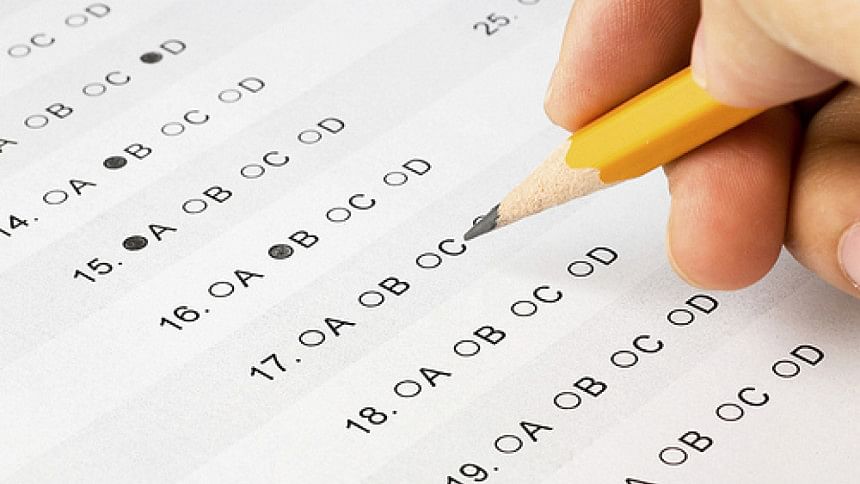How can the results be equitable?

The HSC pass rate of Jessore board dramatically shifted from 46.45 percent last year to 83.42 percent this year. Are the students who appeared in the HSC examination in 2016 better than the students of 2015? In 2016, the percentage of GPA 5 in Rajshahi board is 11.57 percent and in Sylhet 2.68 percent. Do we think that the students of Rajshahi board are brighter than those of Sylhet board? In 2016, from Dhaka board, 23.68 percent of students scored GPA 5 from science and 0.23 percent from humanities. Is it a fair distribution of GPA 5 for students across the streams? These questions cannot be answered unless and until we make our examination results equitable. If we take into consideration the following example, we will see what happens if the results are not equitable.
If we are asked which one is a better score, 75 out of 100 in History or 40 out of 100 in Psychology, we might laugh at the silliness of the questioner. The answer, we assume, is obvious. Let's assess the merit of these two marks along with their mean value drawn for those two data sets. If the mean value of History is 80, we can presume that 75 below the mean value. If the mean value of Psychology is 30, we can presume that 40 is above the mean value. Thus, when comparing the mean value we find that the performance in Psychology is better than that in History. We, therefore, learn that if the result is published on the basis of this assumption of 'good' or 'bad' marks (called raw marks), the true ability of students will not be reflected.
At present, we publish our results on the basis of raw marks -- untreated marks awarded to any candidate by the markers in an examination. These raw marks are influenced by a number of factors. The marks are heavily influenced by the question set, as questions are not of the same difficulty level. And when questions are difficult to understand, candidates sometimes fail to answer the question as expected by the examiners marking the papers, and thus, their marks suffer.
This leads to my next point. Marks awarded are also influenced by the examiners, as they often have their own interpretation while marking. Some examiners have the tendency to mark leniently, some harshly. Besides, physical conditions under which the examination is held, the candidates' frame of mind at the time of the examination and even the sequencing of questions can all influence outcomes. For this reason, raw marks cannot represent the candidates' 'true' ability. So, when results are published on the basis of raw scores, our assessment of students' performances across boards, years, streams and subjects will not be equitable.
How can we ensure equity in public examination results and minimise the inequality across boards, years, subjects and streams? If we would like to compare apples with oranges, we need to consider their individual characteristics because the two are different in nature. Marks and grades do not bear the same meaning. Marks are only a measurement of quantitative data and do not have any value. But grades are more than a measurement as values are associated with it. For example, Promit recieved 80 percent in an English test. This is a quantitative description and does not say anything about his performance. Instead, it says how many marks he has got. But when 80 percent marks denotes that Promit is able to write sentences using correct forms of verbs, spelling, tenses, vocabulary etc. then this is a qualitative description from which we can deduce that Promit is good at English and belongs to the top group of students in English. This is also value associated.
We see reflection of this view in any high stake examinations like the A-level, O-level or Victorian Certificate of Education in Australia after the completion of grade 12. Grades are not merely raw marks in their published result. Grades are values awarded on the basis of standardised scores instead of raw scores. So, the marks used to award GP to a subject are not constant. Sometimes students are in the best performing group for achieving 70 percent, sometimes despite getting over 80 percent, they fail to get an A grade.
So, the result of public examinations should be standardised, giving weight to values. The standardisation process is an attempt to make marks more equitable across subjects, across years and, where applicable, across boards. This never affects the ranking order of candidate marks in any examination, but takes into account students' ability.
The writer is senior examiner and evaluation specialist, Bangladesh Examination Development Unit, SESIP BISE, Dhaka.

 For all latest news, follow The Daily Star's Google News channel.
For all latest news, follow The Daily Star's Google News channel. 








Comments